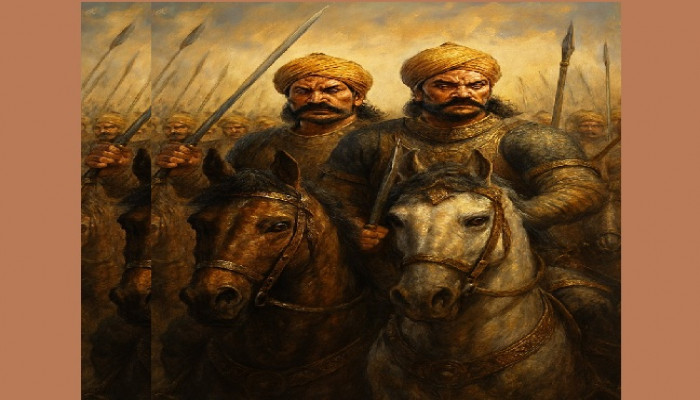Military Campaigns of Telugu Nayaks Against Muslim Invasions
- In History & Culture
- 01:09 PM, Nov 28, 2025
- Ratnakar Sadasyula
The fall of Kakatiyas and the destruction of Orugallu were one of the darkest moments in the history of Telugu land. The invading Tughlaq army, which swept through, razing temples, forcibly converting Hindus, and looting, went all the way up to Madurai. It was during such dark times that one of the greatest revolts against the Muslim rule would emerge in Telugu land.
The Kakatiyas had come up with a system of Nayakas, through which anyone could rise to the position of a leader, solely based on their ability, rather than their caste. These Nayakas were primarily from Shudra peasant communities, who rose to prominence on the basis of their hard work. They controlled their own territories and fought wars during the military campaigns.
During Prataparudra’s time, 75 Nayaks serving under him fought in various campaigns. The Nayaks were now more or less dispersed, until two men decided to bring them together against the Muslim leaders. Bendapudi Annayya Mantri and Kolanu Rudradeva, erstwhile ministers under Prataparudra. They began to reach out to the Nayaks, emphasising the importance of safeguarding Dharma and driving away the Muslim invaders. But such a movement needed a leader who could unite and lead them. And it came in the form of Musunuri Prolayanaka of Vengi, one of the most formidable warriors on the battlefield. He was the son of Pochinayaka and had 3 brothers- Devanayaka, Kammanayaka and Rajanayaka. The son of Rajanayaka, Musunuri Kapanayaka, would become Prolayanayaka’s adopted son and later lead the resistance. He was another great warrior.
Prolayanayaka began to unite the various Nayakas with his wise leadership and organisational ability. Given their ego clashes, Nayakas were divided and bringing them together was no mean feat, certainly. Some of the prominent ones included Addanki Vemareddy, Koppula Prolayanayaka, Recherla Singamanayaka, Manchikonda Ganapatinayaka, and Vundi Vengabhupathi. The Nayakas put aside their petty differences, focusing on the main objective of liberating the Telugu land from the Muslim invaders.
Knowing that the Muslim invaders could not be defeated in a straight battle, Prolaya Nayaka, along with Vema Reddy, launched a series of guerrilla attacks. With the thick forests as their base, they harassed and drove away the Muslims from the entire coastal belt between the Krishna and Godavari.
With age catching up, Prolaya Nayaka stepped down and moved to Khammam, where he spent his final days and handed over power to Kapaya Nayaka. One by one, the Muslim governors in Telugu land were driven out, as the Nayakas recaptured every fort, throwing out the invaders. The successful resistance of the Musunuri Nayakas now inspired the other kingdoms down South to revolt against the Muslim rule and throw off their yoke.
The rulers of Dwarasamudra, Kampilli and Araveedu revolted and threw out the Muslim governors and recaptured their territories. Vema Reddy assisted Kampili in driving out the Muslim governor, while Kapaya and Vema Reddy together helped Somadeva of Araveedu in liberating many forts in the Krishna-Tungabhadra doab region.
Kapaya Nayaka formed an alliance with the Hoysala ruler Veera Ballala III, and along with the Nayakas, liberated Orugallu in 1336, a good 13 years after it fell to the invading Muslim armies, routing the Tuqhlag army, and Malik Maqbool fled to Devagiri. Kapaya Nayaka was given the titles of Andhradesadiswara, Andhrasuratrana, and he, in turn, respected the autonomy of his fellow Nayakas and granted them complete freedom.
From Srikakulam to Bidar, from Sirpur to Kanchi, the Muslim invaders were driven out, following a joint effort by the Nayakas and other kingdoms, as the South once again came under Hindu rule. It was one of the glorious chapters in Telugu history.







Comments